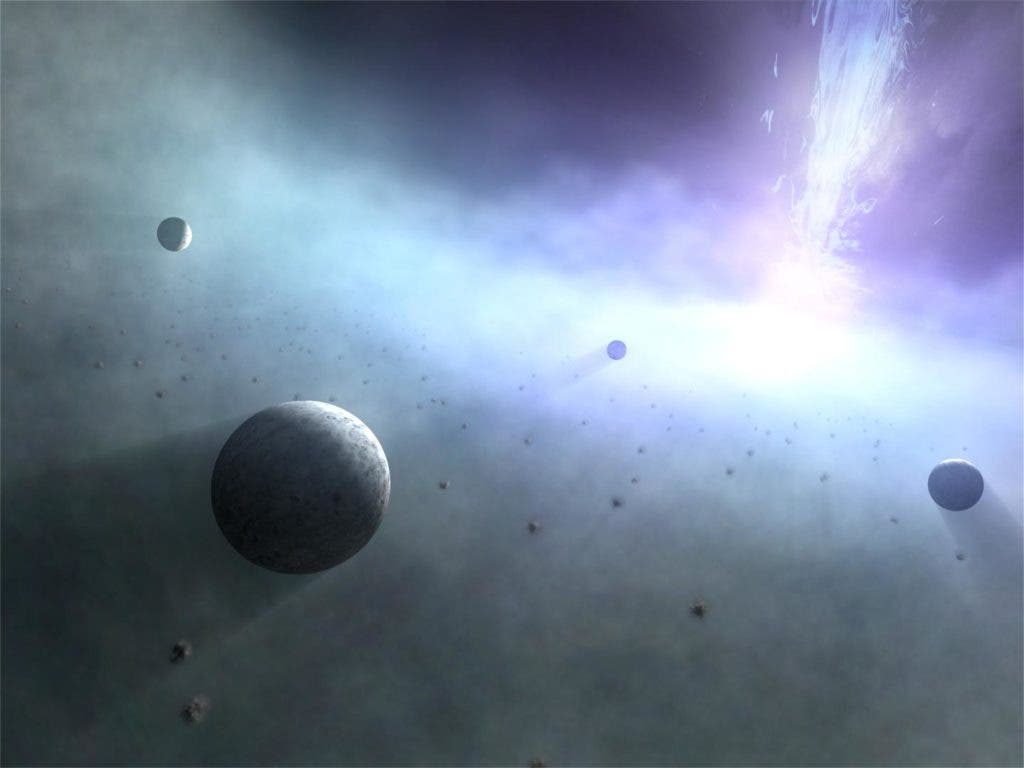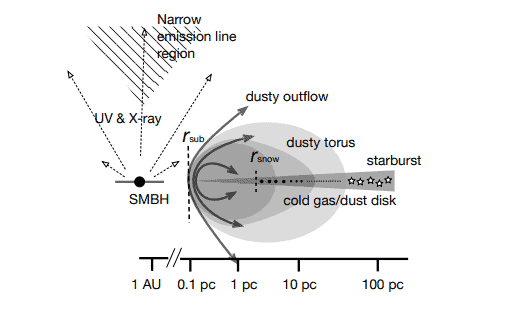
The idea of stars orbiting the supermassive black holes that researchers believe lurk at the centre of most galaxies has been long established as a matter of fact in science. In ‘active galactic nuclei’ or AGNs, these black holes are surrounded by haloes of gas and dust in a violent churning environment. Such clouds of gas and dust have the potential to birth not only stars but planets as well. Yet, the question of whether planets can also orbit these spacetime events has yet to be established.
Enter Keiichi Wada, a professor at Kagoshima University, and Eiichiro Kokubo, a professor at the National Astronomical Observatory of Japan. These scientists from the distinct fields of active galactic nuclei research and planet formation research respectively have calculated that as a result of gas disc growth, an entirely new class of planets may form around supermassive black holes.
“With the right conditions, planets could be formed even in harsh environments, such as around a black hole,” Wada points out.
In their research published in the Astrophysical Journal, the duo of theoreticians propose that protoplanetary discs that surround young stars may not be the only potential site for planet formation. The researchers instead focused calculations and mathematical models on the denser dust discs found around supermassive black holes in AGNs, thus arriving at a surprising conclusion.
“Our calculations show that tens of thousands of planets with 10 times the mass of the Earth could be formed [at a distance of] around 10 light-years from a black hole,” says Eiichiro Kokubo.
“Around black holes, there might exist planetary systems of astonishing scale.”
One of the hindrances to the formation of planets in such discs of dust has previously been the amount of energy generated in AGNs, Researchers had believed that this energy output would prevent the coagulation of ‘fluffy ice dust’ that can help the growth of dust grains that can lead to planet formation in protoplanetary discs.
But, what Wada and Kokubo discovered was that the huge density of dust discs around supermassive black holes in AGNs —potentially containing as much as a hundred thousand times the mass of the Sun worth of dust, which is a billion times more massive than a typical protoplanetary disc — helps protect the outer layers from bombardment from high-energy radiation such as gamma rays.

This helps form a low-temperature region similar to that found in protoplanetary discs, and thus, in turn, increases the likelihood of fluffy deposits building.
The process would lead to the formation of planets within a period of several hundred million years, according to the pair, and also result in much denser and more populated collections of planets.
Unfortunately, the limits of current methods of identifying exoplanets would make identifying planets around a supermassive black hole challenging to say the least.
“ Doppler spectroscopy, transit photometry, gravitational micro-lensing, or direct imaging are hopeless,” warn the duo in their paper. They go on to suggest that a method called photometry with an x-ray interferometer located in space could be a possible solution — if a way of distinguishing the effect caused by such planets from the natural variability of the AGN can be developed.
For now, researchers will have to look to mathematical models alone to theorise about the potential for planets in orbit around black holes.
Original research: https://arxiv.org/pdf/1909.06748.pdf



